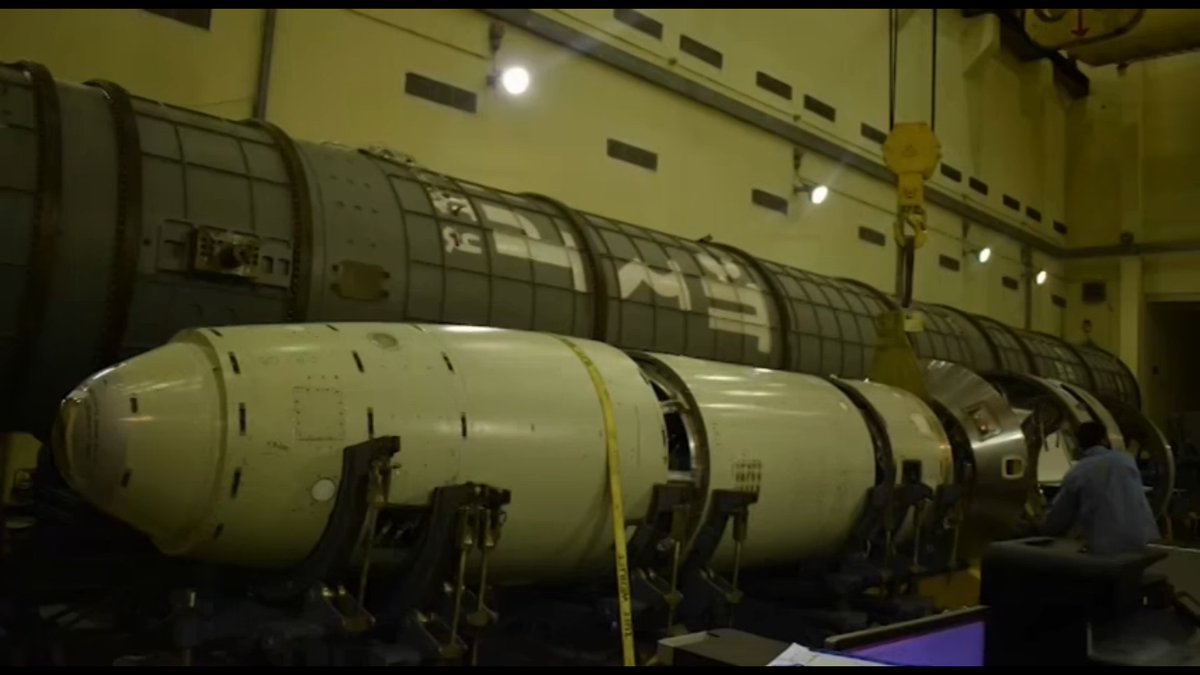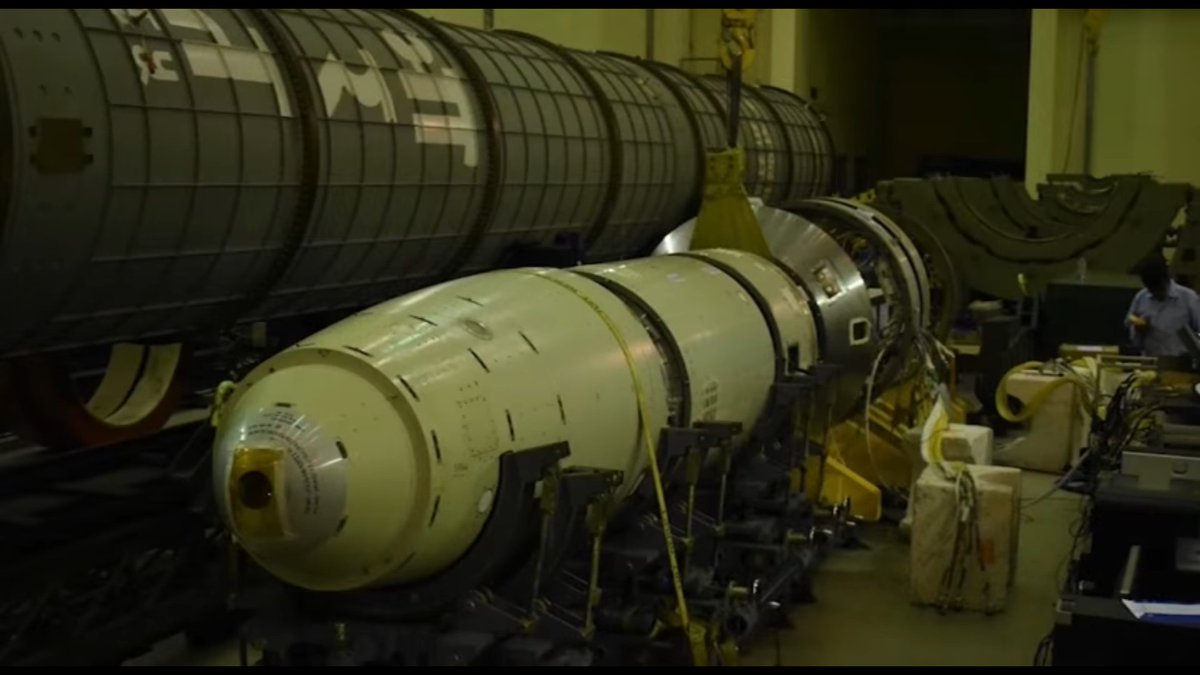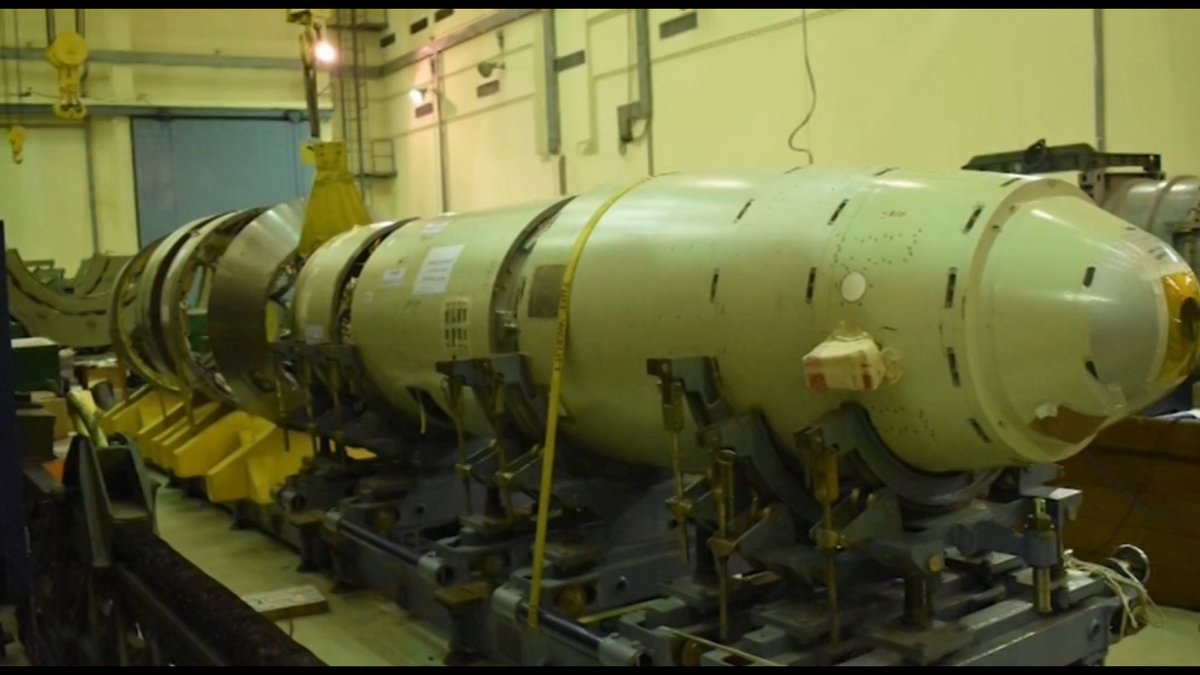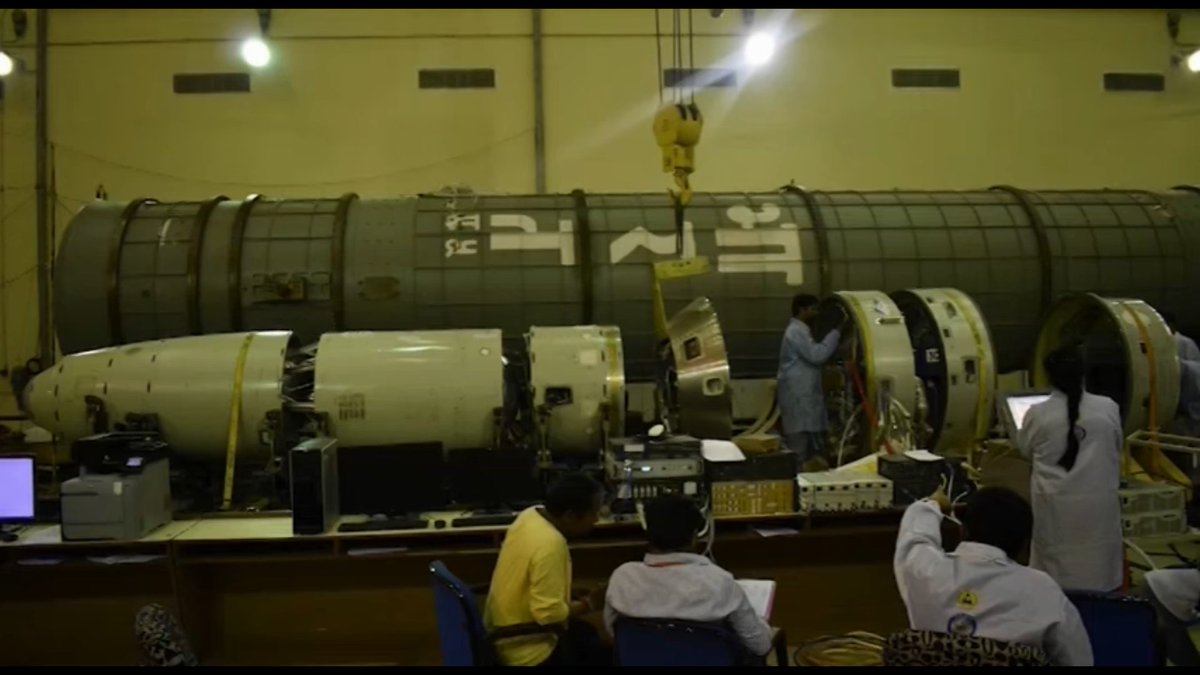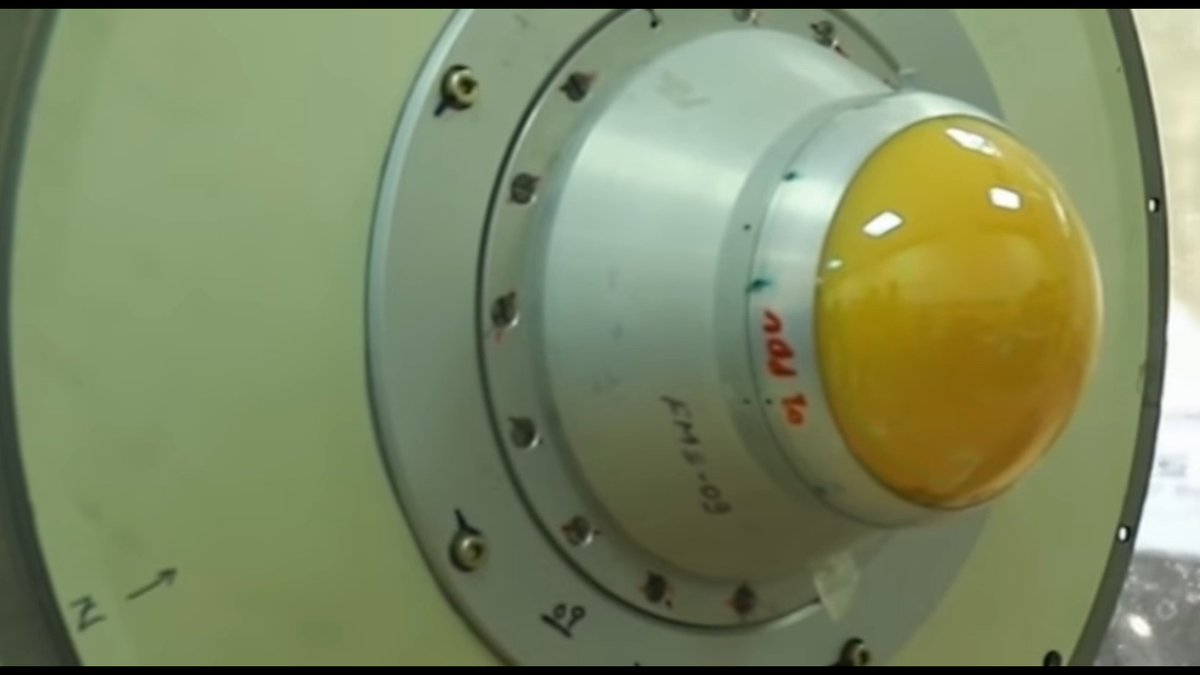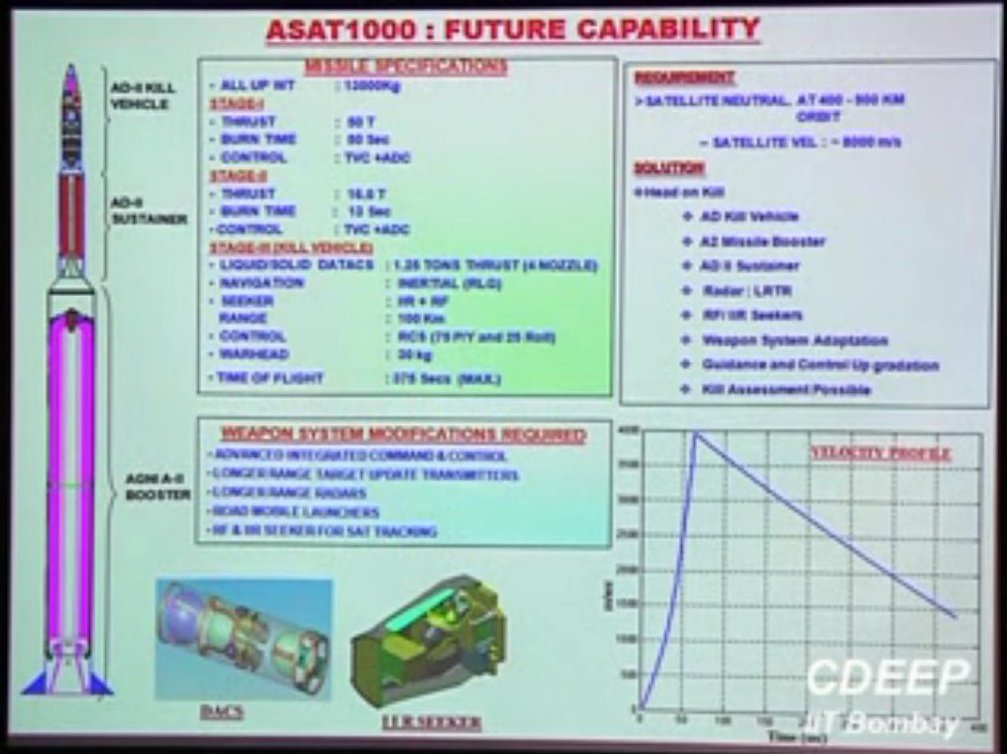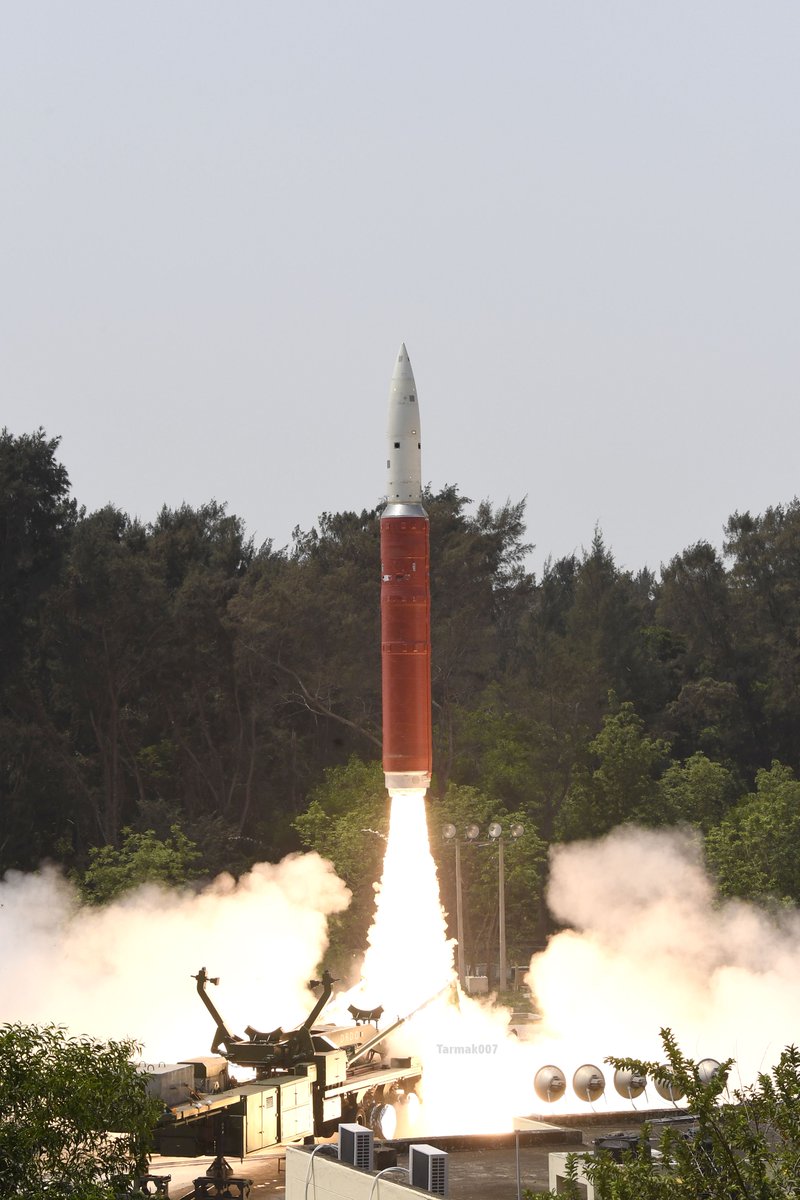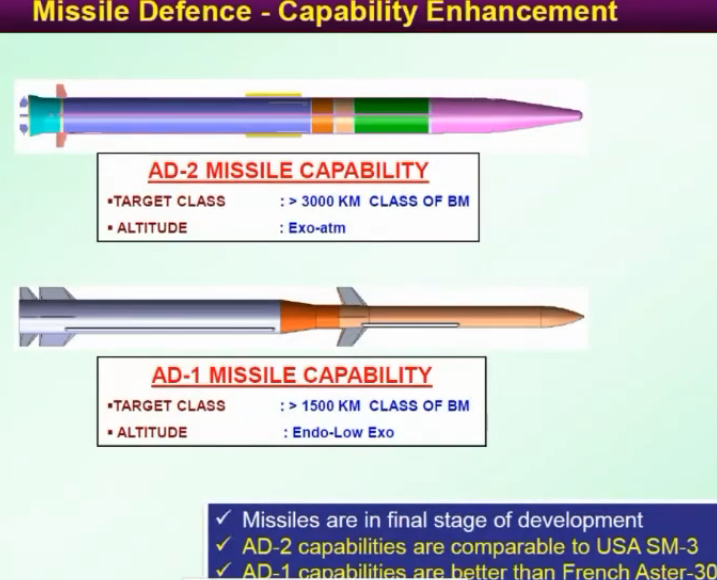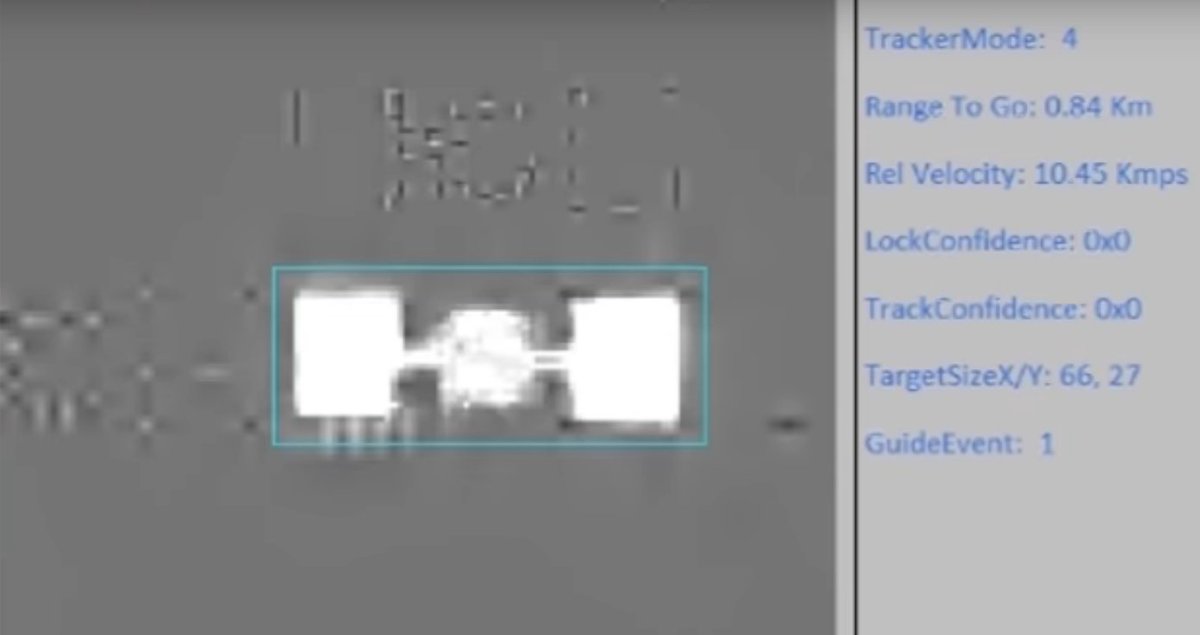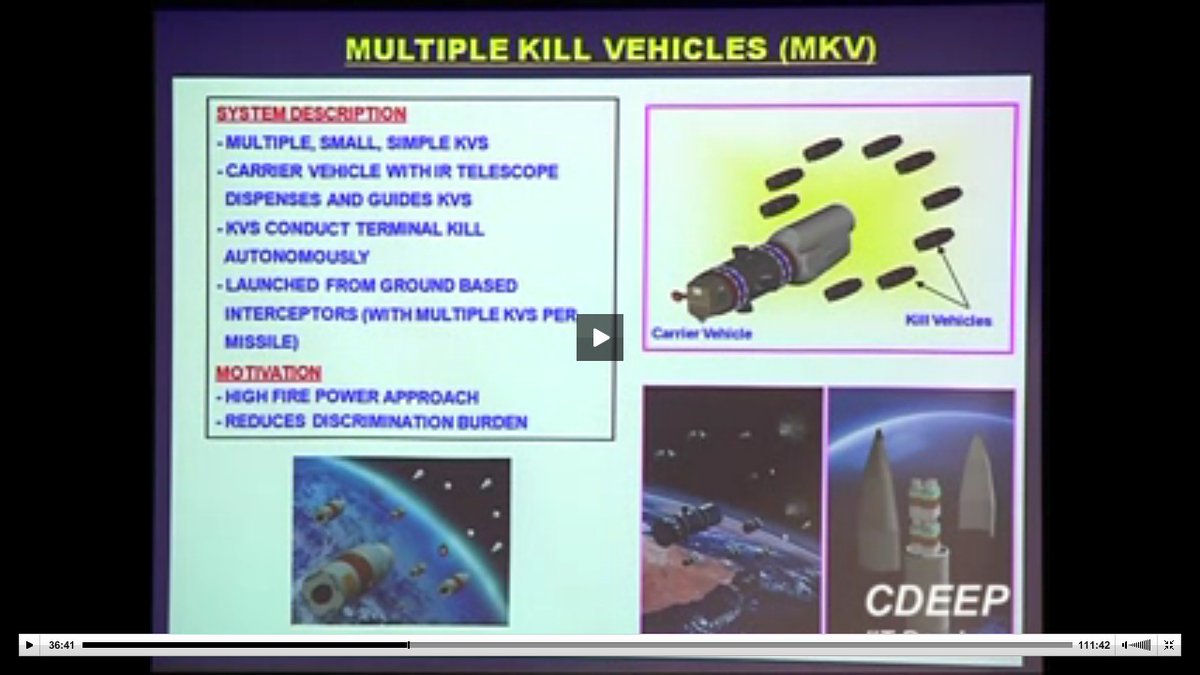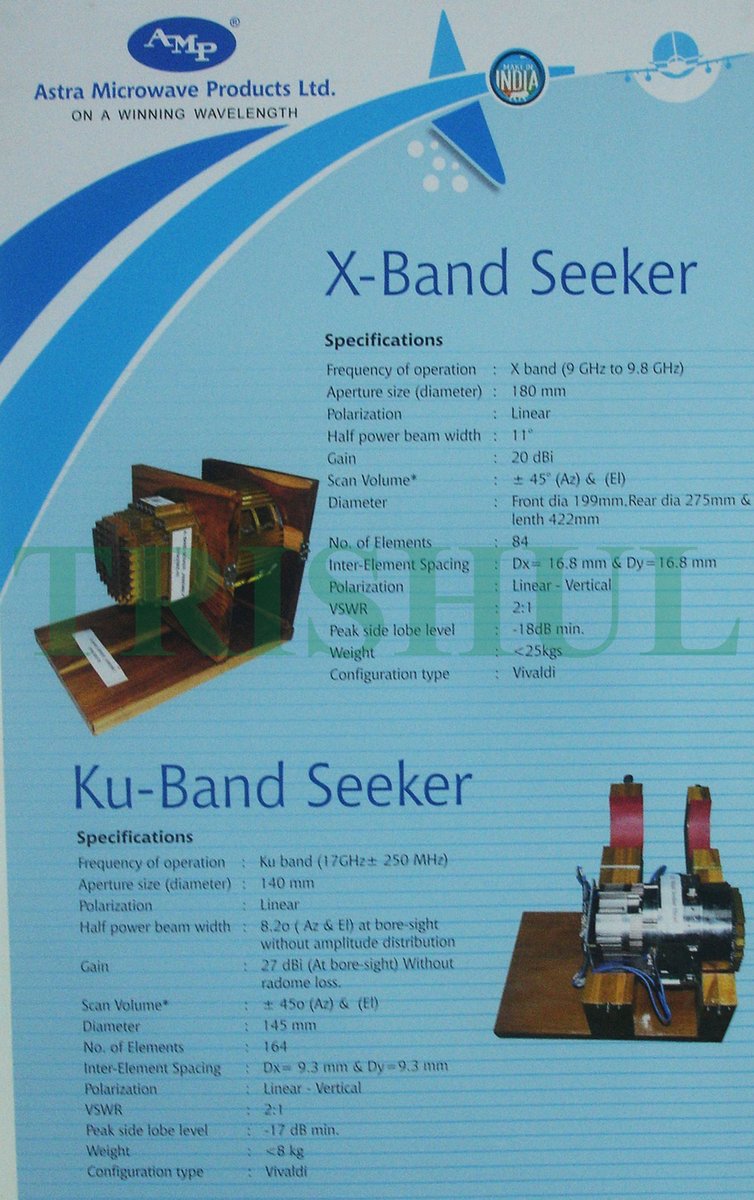THREAD on Indian BMD developments:
The ASAT being assembled on a rig, electronics of the missile are getting integrated. There is a cannister behind the missile. The front end of the missile shows a window for the IIR seeker to see through. The DACS nozzles are also visible.
The ASAT being assembled on a rig, electronics of the missile are getting integrated. There is a cannister behind the missile. The front end of the missile shows a window for the IIR seeker to see through. The DACS nozzles are also visible.
DACS stands for Divert Attitude Control System which is a quick reaction propulsion system providing very fast & accurate course correction ability. DACS is absolutely vital for any hit-to-kill AD system. The DACS on PDV/ASAT probably uses UDMH as fuel.
IIR seeker of the ASAT was made by RCI. It was labelled PDV. The IIR seeker has a range of ~200 km. That& #39;s an incredible range for an imaging seeker. The cold background of space provides a very contrasting infrared picture of the sun soaked Microsat-R that was hit in that test.
Former DRDO chief Dr. V. K. Saraswat made a presentation in IIT-Bombay in 2014. Among many other topics there was a slide on a 3 stage "ASAT-1000". The 1st stage would be derived from an Agni missile. The other 2 stages would be from AD-1 & 2 missiles.
But ASAT as seen during the test was different. 1st stage was derived from the K4 not Agni. 2nd stage is derived from PDV not AD-1/2. Clearly the ASAT has undergone some design changes, but the ASAT is still linked with Phase 2 of BMD program due to technology overlap.
The technology proven in the ASAT test will find its way on to the AD-2 missile. While the AD-1 is likely to have a RF seeker for terminal guidance, the AD-2 will have IIR seeker. This is likely due to the difference in application environments(endo vs. exo-atmospheric).
In 2008, US Navy destroyer USS Lake Erie fired a SM-3 missile which hit & destroyed a sat at 247km with relative velocity of 10.185 km/s. The ASAT, in comparison, destroyed the sat at 300km with a relative velocity of 10.45 km/s. Pic shows the final image from ASAT& #39;s IIR seeker.
The DACS, seeker, guidance & navigation tech is already here for making a SM-3 like missile, that& #39;s the AD-2& #39;s role. A future variant of the ASAT might serve the role of a mobile ground-based mid-course interceptor like those of USA. MKV to take out MIRVs is under development.
The endo-atmospheric interceptor AD-1 is likely to feature a RF based seeker. The seeker is likely to be an upgrade over the existent RF seekers seen on the Phase 1 BMD interceptor missiles. Work on AESA seekers is ongoing, AD-1 missile is a likely application area for these.
The company involved in the development of AESA seekers is AMPL. They posted the following as their work in the last quarter. Among others milestones, the document mentions the development RF AESA seekers. DRDO& #39;s RCI is also believed to be involved in the AESA seeker development.
For more discussions : https://www.strategicfront.org/forums/threads/indian-ballistic-missile-defence-programme-updates-and-discussions.616/post-75426">https://www.strategicfront.org/forums/th...

 Read on Twitter
Read on Twitter